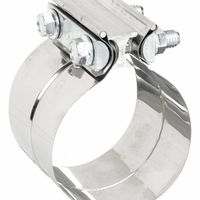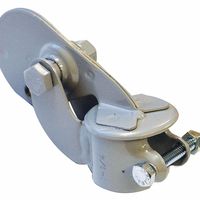- Home
- Fleet Vehicle Maintenance
- Vehicle Engine Radiator Exhaust Maintenance
- Vehicle Exhaust Maintenance
Vehicle Exhaust Maintenance
Vehicle exhaust maintenance products maintain and repair emission systems. Exhaust and muffler clamps mount to the underside of a vehicle to support a muffler assembly and prevent damage to hanging exhaust pipes. Exhaust stack rain caps prevent dirt, dust, debris, snow, and water from blowing or fal .....Read More
Frequently Asked Questions
What are the best products for maintaining vehicle exhaust systems?
How often should exhaust systems be inspected for maintenance?
What are the signs of a failing exhaust system?
How do exhaust and muffler clamps work?
What is the purpose of exhaust stack rain caps?
How can I prevent rust and corrosion in my vehicle's exhaust system?
What are the costs associated with repairing or replacing an exhaust system?

